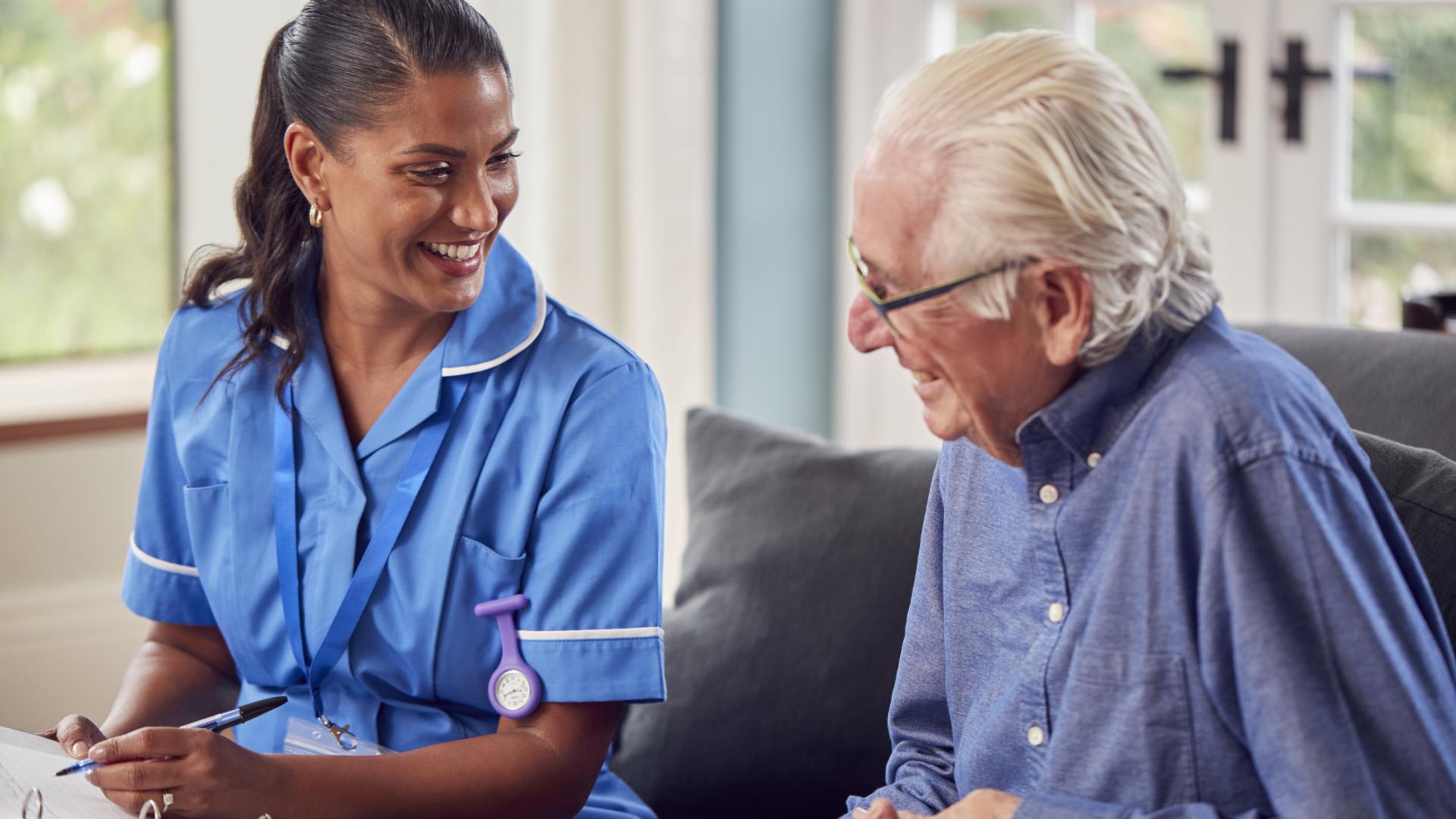How Occupational Therapy Can Improve Life With Low Vision
Hear from an expert about what occupational therapists do, when to see one, and how they can help improve daily living with low vision.
Written By: BrightFocus Editorial Staff
Hear from an expert about what occupational therapists do, when to see one, and how they can help improve daily living with low vision.
Written By: BrightFocus Editorial Staff

Occupational therapy offers tools, techniques, and treatments to help people with low vision navigate their daily lives and environments with greater ease, safety, and comfort. Allysin Bridges-German, a licensed doctor of occupational therapy and clinical assistant professor at Towson University, specializes in helping patients with low vision and explains how occupational therapy can help them.
Occupational therapists (OTs) work with people who have experienced any kind of injury or illness that affects their functioning. Low vision OTs like Dr. Bridges-German undergo additional training to serve people with low vision. They offer visual exercises like eccentric viewing (using other parts of the visual field besides the central part, such as peripheral vision), visual tracking (focusing the eyes on an object as it moves across the field of vision), and visual scanning (using vision to search in a systematic manner, such as top to bottom and left to right), as well as tools and technology for making daily tasks easier.
“We look at the whole person, and we determine how vision impairment has impacted [their] ability to complete specific tasks and how they navigate their environment,” she said. “Then, we modify that task or their environment to minimize or remove those limitations.” Often, OTs can help you find and use technology to help ease your daily tasks and hobbies, too. They prioritize patients’ routines, preferences, interests, and overall health needs in their recommendations.
When Dr. Bridges-German does a home evaluation, she prefers to offer information so that patients can make the best decisions for them. But she also has general recommendations for around the house:
If you are bumping into things in a familiar environment, like your own home, or missing whole sides on your plate at mealtime, it might be time to find an OT. “You could go to your primary care provider, optometrist, or ophthalmologist for a recommendation for a low vision OT prescription,” Dr. Bridges-German said. “A lot of times, we’re available through most hospitals, outpatient facilities, clinics, and private practices”
Most insurance plans do include low vision OT. “I know Medicaid services are state by state for OT coverage,” Dr. Bridges-German said. “Medicare has extended coverage for low vision rehab, but I know Medicare requires a referral from an optometrist or a physician.”
No matter what, Dr. Bridges-German said, “Keep getting your visual health checked. Stay up to date with that. And if you haven’t seen a low vision OT, it might be time to experience that and see what your low vision OT can do for you.”
This conversation with Dr. Bridges-German was part of a BrightFocus Chat, monthly, in-depth telephone conversations with scientists and eye experts about managing vision loss and exciting scientific breakthroughs. Listen to the full conversation with Dr. Bridges-German or read the transcript.
BrightFocus Foundation is a premier global nonprofit funder of research to defeat Alzheimer’s, macular degeneration, and glaucoma. Since its inception more than 50 years ago, BrightFocus and its flagship research programs—Alzheimer’s Disease Research, Macular Degeneration Research, and National Glaucoma Research—has awarded more than $300 million in research grants to scientists around the world, catalyzing thousands of scientific breakthroughs, life-enhancing treatments, and diagnostic tools. We also share the latest research findings, expert information, and resources to empower the millions impacted by these devastating diseases. Learn more at brightfocus.org.
Disclaimer: The information provided here is a public service of BrightFocus Foundation and is not intended to constitute medical advice. Please consult your physician for personalized medical, dietary, and/or exercise advice. Any medications or supplements should only be taken under medical supervision. BrightFocus Foundation does not endorse any medical products or therapies.
Help Fight Macular Degeneration and Save Sight
Your donation helps fund critical research to bring us closer to a cure for this sight-stealing disease and provide vital information to the public.
Donate Today